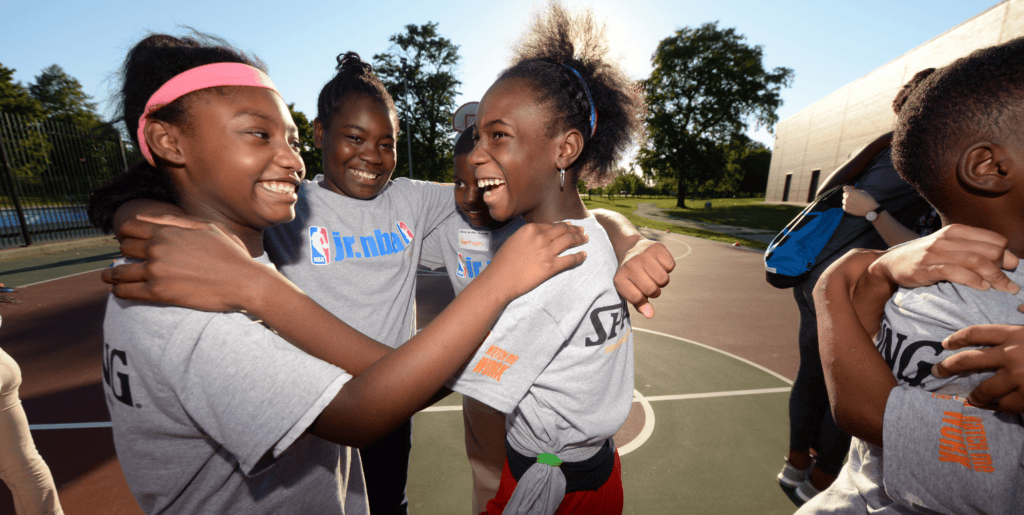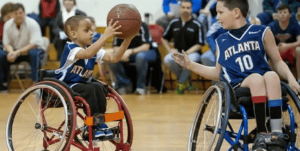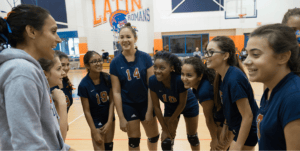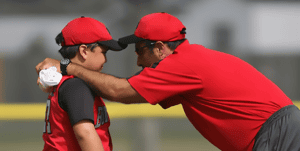PCA Resource zone
WNBA/NBA/Jr. NBA/PCA Title IX Explainer

Gender Equity in Sports 101: An Overview of Title IX
WHAT IS TITLE IX?
Title IX is a Federal Law passed by Congress on June 23, 1972 that applies throughout the United States.
The law requires gender equity in any and all federally funded educational programs, including athletic programming—in preschools; elementary, middle, and high schools; and colleges and universities.
Title IX was passed in recognition of the fact that educational programs lacked gender equity; the law helped make big changes, including for girls and women in sports.
WHY DO TITLE IX AND GENDER EQUITY IN SPORTS MATTER?
- Girls and women who play sports experience lifelong benefits including…
- Higher grades and graduation rates
- Better mental and physical health
- Higher wages as adults in the workplace
Everyone is empowered to raise their voice and ENSURE FAIRNESS IN ATHLETICS PROGRAMS because…
- It’s the law
- It’s the right thing to do
- It’s good for everyone
WHAT DOES TITLE IX REQUIRE?*
Equitable participation opportunities
- Title IX requires equitable opportunities for students to play sports. For example, if a student body is 50% girls, roughly 50% of athletics slots across teams should be afforded to girls, responsive to and in proportion with girls’ and students’ interests, over time.
- Title IX does not require that girls play, just that schools offer sports and other opportunities
in a gender-equitable, inclusive way. Girls play sports because they want to!
Equitable treatment and benefits
- Title IX requires equitable treatment and benefits across the board of any athletic program. Girls, boys, and athletes on coed teams get equitable scheduling, equipment and supplies, spaces to play and practice, coaching support, and more.
- Publicityforallsportsshouldbegender equitable, meaning the yearbook, announcements, and banners equally advertise all teams regardless of gender.
- When it comes to Title IX compliance,
all teams within a school’s athletic program are examined together.
Support for speaking up
- TitleIXprohibitsretaliation/backlashagainst coaches, students, parents and guardians, and others who raise concerns or complaints of gender inequity.
- Institutionsshouldwelcomecommunity members’ help in identifying and addressing inequity.
WHAT STRIDES HAVE BEEN MADE UNDER TITLE IX?
- When Title IX was passed, fewer than 300,000 girls played high school sports; today, over 3 million girls do. However, boys get more than 4.5 million high school athletic slots, so there is more work to do, especially in low-income areas and communities of color.
- There are approximately 10 times as many women playing college sports today as there were in 1972. In the U.S., approximately 37% of employed athletes and sport competitors are women, with that percentage increasing every year.
WHAT WORK IS LEFT TO DO FOR TITLE IX SPORTS EQUITY?
- While gender equity in school and college sports has improved, girls, women, and a range of students still face barriers to play and equity. Girls and women lack opportunities that fully meet their interests in athletics programming and face inequity in treatment and benefits. Unfairness is especially acute in communities of color and low-income areas.
- Addingmoreandequalsportsopportunities for girls and women — a “level playing field” — is key!
WHAT SHOULD I DO ABOUT GENDER INEQUITY IN MY ATHLETIC PROGRAM?
If you see gender-based inequity in a school, college, or university program, one can bring it to the attention of:
- Family, community members, a teacher, an athletic director, a principal, or another relevant school official.
- Yourstate’sdepartmentofeducation.
- Astateathleticassociation.
- The U.S. Department of Education’s Office for Civil Rights.
- A local attorney or advocate, as needed. Parents, caregivers, students, coaches,
and staff members all play a part in spotting inequities. No matter your role, age, or gender, you can be an advocate and ally for gender equity in school sports. Everyone is empowered to raise their voice and ensure fairness in athletics programs — because it’s the law, the right thing to do, and good for everyone.
MORE RESOURCES
National Women’s Law Center – Check It Out Guide https://nwlc.org/wp-content/uploads/2015/08/ Checkitout.pdf
Women’s Sports Foundation – Play Fair Guide https://www.womenssportsfoundation.org/wp-content/ uploads/2016/09/play_fair_final.pdf
Office for Civil Rights, Dept. of Education https://www2.ed.gov/about/offices/list/ocr/index.html
* Note, this general information does not contain legal advice. Seek assistance as needed.






